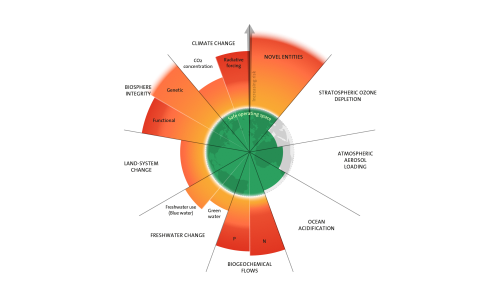15 September 2023


In a paper recently published in the journal Science Advances, an international team of scientists provides a detailed outline of planetary resilience by mapping out all nine boundary processes that define a safe operating space for humanity.
From globalwarming to the biosphere and deforestation, from pollutants and plastic to nitrogen cycles and freshwater: Six of nine planetary boundaries are being crossed, while simultaneously pressure in all boundary processes is increasing.
This is the third major assessment of the planetary boundaries framework, first introduced in 2009, and the first to provide a complete check-up of all nine processes and systems that maintain the stability and resilience of our planet. The new planetary boundaries assessment underlines the tight and complex links between people and planet. It gives a basis for more systematic efforts to protect, recover and rebuild Earth resilience.
Read more in the link below.
The SWIFTT project has the potential to be a major contributor to addressing some of these challenges to our planet, making us better positioned to combat climate change and preserve its biodiversity through healthier forests. SWIFTT will help forest managers to detect and map threats that are responsible for most of the biomass loss in European forests, using Copernicus satellite imagery and powerful machine learning models, and allow them to act proactively and allocate resources efficiently for a timely intervention.

